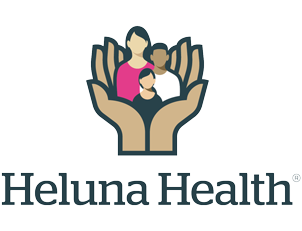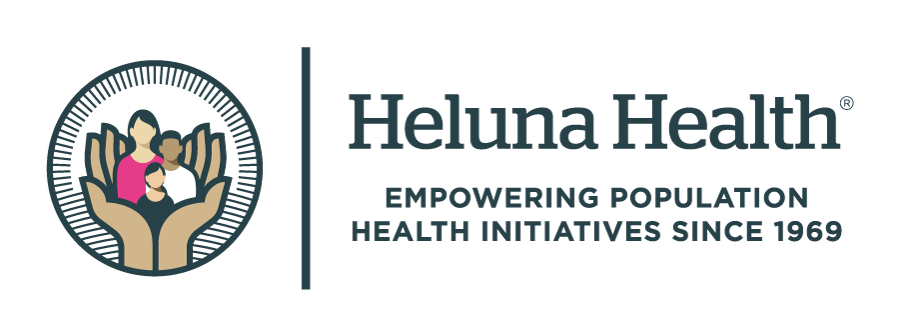When it comes to measuring the effectiveness of health across systems, it’s important to consider the significance of the concept of population health and all of the interrelated contributors. Population health is a field that has grown with increasing interest in recent years as professionals seek to improve public health systems and access to health resources. Discussions around population health focus on the root causes of health problems, and the resulting outcomes from these issues. Heluna Health believes that by taking a systemic approach and addressing the unique needs of a community, it can provide a more feasible way to create measurable goals for improving health outcomes.
The systems-approach to addressing population health measures health based on a variety of interrelated factors such as social, racial, economic, and physical. These so-called ‘determinants of health’ (i.e., geographical location or socioeconomic status) can be assessed more fully by using a systems-approach to population health. For example, the source of one community’s health problems might be due to a lack of health care clinics in their region, or even lack of public transportation to clinics. When we understand what some of these determining factors are, we can become better problem-solvers in creating health improvement programs. In many cases, this approach can have a significant impact within diverse urban communities where population health trends can be inconsistent.
It is also important to understand that population health is a term that refers to a variety of interdependent, complex issues. A systems-approach to population health operates under the notion that community health improvement involves more than just stand-alone disease prevention and treatment programs. There are also other factors involved, such as resources to improve health behaviors, quality of life, and safety. For example, population health can be improved through things like anti-tobacco campaigns, clean air regulations, and child car seat voucher programs.
How Systems Impact Population Health and Vice Versa
How does population health impact communities and society as a whole? In addition to evaluating the social determinants of health, it is also important to identify the specific social impacts. Grasping the concept of systems thinking is essential to being a social innovator in the health field. Poor population health can have detrimental economic impacts, for example. If we are addressing community health challenges, it is essential to understand the connections across other social systems.
Furthermore, health is strongly linked to the socio-economic success of a community. In order to fully measure the amount of opportunity in a community, we must assess different groups’ access to health resources, or health equity. Health equity addresses the varying levels of access to opportunities for health improvement among different groups. Not every group in society has the same access to health care, nutrition, clean air, or safe streets, for example, and the gaps between those with the most access and the least access determine the level of health equity across communities.
If a significant portion of the population does not have access to health resources, there may be an impact on certain aspects of society. Population health aims not only to look at the individual health issues themselves, but the who, what, why, and how of these issues. It is essential to look at determinants of overall health, the people most affected, and what kind of socio-economic impacts they may have.
The Role of Population Health Management
Why is population health management important? Continuously evolving and improving programs is a key way to optimize population health. It is important to evaluate current health trends and develop effective programs to address the unique health challenges within a community. Managing population health means more than just focusing on disease prevention and research; it also aims to increase equitable access to health care and initiatives that address the overall health and well-being of a community. Population health management is not only about ensuring flu shots reach community members, but also about making sure initiatives to support social determinants of health, such as family nutrition, housing, literacy, and childcare are a priority.
Social innovation is at the core of finding new ways to drive positive population health outcomes. It is important to assess a community through the population health lens by identifying gaps in the health resources currently available, then conducting research and experimenting to find solutions to close those gaps. Working to solve population health problems requires hard work and expertise, built upon a commitment to helping more people improve their quality of life.
Heluna Health optimizes population health by providing strong fiscal and administrative support services to its clients and partners. By supporting health experts and community leaders to work together more effectively, Heluna Health supports communities to improve health outcomes. These support services not only enable population health professionals to focus on what they do best but also ensure population health funds and services reach people in communities that need them most.
Characteristics of “Good” Population Health
A proper assessment of a population’s overall health includes addressing the full spectrum of population health.
Some of the common areas of focus when assessing population health include family health and support resources that are available within communities. Family health usually includes programs like family planning, nutrition assistance for mothers and children, and pediatric care. When resources and social services are provided to families in need, the overall health of each household can increase, which can then be scaled to improve the overall health of communities. Optimizing access to things like family planning, pediatric care, and breastfeeding support can have an immensely positive impact on population health.
As touched on earlier, another key aspect of population health is health equity within a community. One of the key diminishing factors of population health is the lack of access to health services and facilities. Many community members suffer health problems merely because they do not have access to the services they need. This usually results in cases of disease and sometimes death that may have been preventable. It is important for communities and health experts to advocate for equitable access to health services in underserved communities, with a focus on reducing disparities.
In addition to accessibility, population health measures tend to focus on preventing communicable and chronic diseases. Disease outbreaks, especially among specific segments of the population, for example, have the potential to have trickle-down economic impacts if a particular population of a workforce is limited due to illness. Preventing disease and developing technology to detect the disease early on can vastly transform overall public health.
Mental illness and addiction are other factors that contribute to overall community health. Mental illness can have just as much, if not more, of a negative impact on a community and it is essential to ensure that population health improvement programs address the root causes that contribute to mental health. Society is not nearly as productive and flourishing when the impacts of mental health are not being addressed.
Finally, the older and elderly population segments are also important to assess when measuring community health. How does an aging population impact health systems? Naturally, population health is optimized when people live longer with a higher quality of life. When the aging portion of the population is in better health, there is less stress on health and economic systems. When the older population maintains good health for longer, they are able to be productive workers in society for longer and reduce demand on an already inundated healthcare system.
Challenges in Measuring Population Health
The most challenging areas for population health improvement are within the urban populations where there is a broad range of economic, ethnic, cultural, and racial diversity. Within many cities, this diversity exists within a relatively small area. Collecting fully accurate data from the diverse subgroups can be quite difficult. In addition, it may be difficult to isolate factors that may be contributing to poor health outcomes within a specific group and across groups. This may lead to the inability for public health researchers to pinpoint how best to serve communities with the greatest need with the best care.
When people from varying socio-demographic groups are simultaneously accessing different private and public health facilities for different services, it is much more difficult to conclude what the real needs are and where the real gaps lie. It is much more challenging to discern what health services are truly lacking because the needs are less clear. For example, a woman may choose to go to a private doctor for an annual exam, but then choose to go to a free clinic in order to receive other services. It then becomes more difficult to evaluate the needs this woman may have when there may not be an easy way of consolidating the data across the doctor’s office and the clinic.
Population Health Funding
Another major challenge facing professionals in population health research and population health program implementation, in general, is finding ways to diversify funding sources. There is often little motivation for the private sector to invest in population health initiatives because the financial gains resulting from population health improvements take time. Additionally, it is difficult for the public sector to engage in these initiatives because of shifting politics and uncertainty on who will control tax dollars over the long term. This is why it is important for corporate and nonprofit organizations to work together, sometimes with government agencies, to develop initiatives that focus on improving community health. These public-private partnerships can work with a fiscal sponsor, like Heluna Health, as an intermediary to further their initiatives. Fiscal sponsors like Heluna Health can help achieve population health goals because they provide the infrastructure of a 501(c)3 organization, a strong network of existing partnerships, and expertise in advancing a broad range of population health projects.
How to Overcome Population Health Challenges
The real key to overcoming the population health challenges is increasing opportunities for collaboration among local health service providers, public health departments, and community partners. When these entities have a stake in improved population health outcomes and are working toward a shared goal, it becomes much easier to make adjustments to components of the current system and leverage the strengths of each partner to implement new solutions. As a fiscal sponsor, Heluna Health works to strengthen these community partnerships by providing a ‘home’ for projects with the necessary administrative structure. Communities flourish when health services are accessible to all and when systems adapt as community needs change and technology advances.
To find out how your organization can get involved in this type of change making, get in touch with Heluna Health, the new Public Health Foundation Enterprises. Heluna Health is working to improve population health outcomes by providing fiscal sponsorship and other support services to organizations, helping to bridge gaps across systems and revitalize community health. By empowering population health practitioners to innovate, Heluna Health is helping to improve access to care, prevent disease, and bring systematic change to communities.





